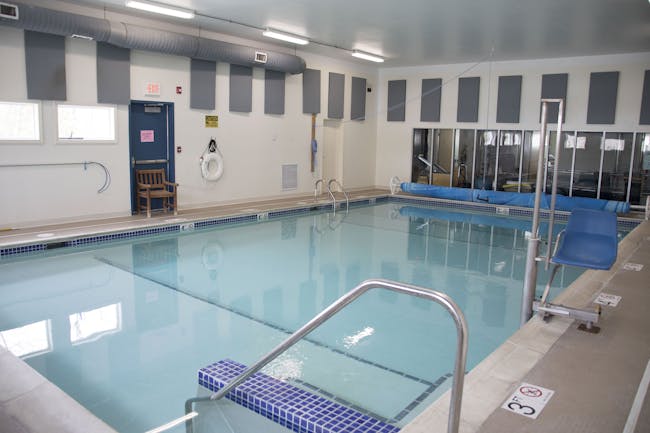
Aquatic Therapy offers benefits when rehabilitating injuries. When submerged in water, buoyancy supports a patient’s weight. This reduces compression on the spine and extremities allowing exercise without the forces present with routine land-based programs. This aspect of aquatic therapy is especially useful for patients with arthritis, healing fractured bones, elevated pain, or who are overweight.
The natural hydrostatic pressure from water promotes reduction in joint and tissue swelling. The resistance of water allows a patient to strengthen their muscles with less joint compression. MHR’s pool is kept at 91 to 92 degrees allowing muscles to relax in the warmth of the pool reducing pain.
There can be mental benefits to aquatic therapy as well. The water allows movement that people often cannot perform on land. This may allow a faster progression in therapy and people are encouraged they can bend, squat and walk with much less or no pain. Athletes will be able to continue many of their functional movement patterns until they are ready to return to land based training.
Commons Diagnoses which Aquatic Therapy offers the most benefits:
- Arthritis
- Pain
- General deconditioning and weakness
- Fibromyalgia
- Total Hip, Knee, or Joint Replacements
- Walking and Postural Deficits
- Difficulty Walking or Weight-Bearing Capacity
- Extremity Injuries Preventing Exercise on Land
- Spinal Injuries Preventing Exercise on Land
- Obesity
- Sports injuries
